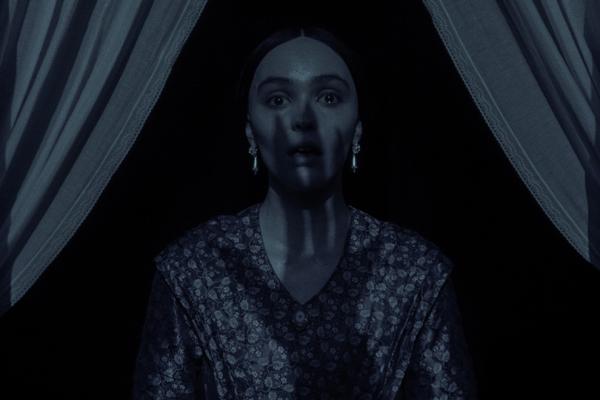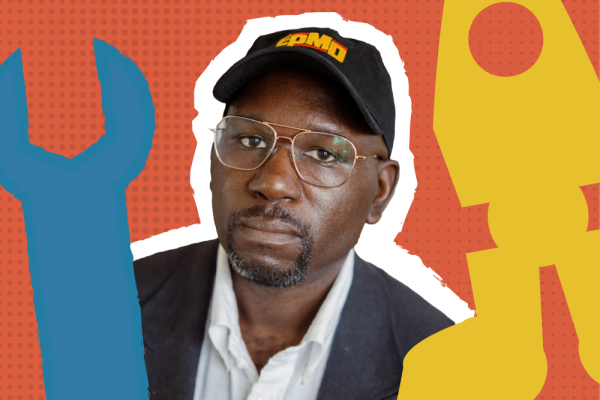Are You There God? It’s Me, Margaret is no stranger to criticism. Since the book was first published in 1970, many groups, including the Moral Majority, have sought to remove the novel from shelves, citing its themes about sexuality and religious skepticism. But that didn’t stop author Judy Blume from tackling these themes — and didn’t deter writer/director Kelly Fremon Craig from spotlighting these issues in the new film adaptation, now in theaters. Children are already exploring sexuality and religious skepticism in complex and important ways — so our films and books should, too.
In both the book and film, Margaret Simon (portrayed by Abby Ryder Fortson in the film) grapples with questions of identity, place, and change. Distraught and devastated by her family’s move from New York City to the New Jersey suburbs, Margaret begins to pray. “Please help me, God,” she says. “Please don’t let New Jersey be too horrible.”
After the move, Margaret starts class at her new school and falls into a friend group. On a getting-to-know-you questionnaire that she fills out for her new teacher Mr. Benedict (Echo Kellum), Margaret says she hates religious holidays. He challenges her to explore that feeling and complete a research project on it for a class assignment.
Margaret is being raised by a Christian mother (Rachel McAdams) and Jewish father (Benny Safdie). In order to protect Margaret from some of the religious trauma they have experienced, they decide to raise her with no religion. They tell Margaret that she can choose her own path in her own time. For now, Margaret continues her private prayers to God.
Often Margaret’s prayers are pleas to God for her body to develop. “Have you thought about it, God? About my growing, I mean. I’ve got a bra now. It would be nice if I had something to put in it,” she prays.
At other times, her prayers turn to questions about human nature. No one has ever given Margaret rules or guidelines for how to pray — or how not to pray — so her prayers are uninhibited. She asks God to make her “normal and regular just like everybody else.” Her prayers have the capacity to hold the breadth of her emotional landscape.
Eventually Margaret, speaking about her religious identity, tells God, “I think it’s finally time for me to decide.”
Throughout Margaret’s spiritual discovery, she tries out several religious services. She attends a couple different Christian denominations. She attends a high-energy church service with her friend Janie, where they clap and jump to the music. “I don’t know if I got the feeling but I’m sure in a good mood,” she tells God.
After visiting her grandmother’s (Kathy Bates) synagogue, Margaret is confused and a little let down by what she experienced. She tells God, “The people seem nice and I like the music.” But she says she was expecting something else — she wanted to feel a certain “something.” For Margaret, this “something” holds extra weight. She searches for it throughout the film.
“I looked for you in temple. I looked for you in church. I don’t feel you at all,” she says to God.
Throughout the film, there are deep parallels between spirituality and puberty. Margaret and her friends talk about if they “got it.” By “it,” they mean their periods. This same elusive “something” continues to present itself throughout the film, oscillating between both spirituality and menstruation, but with the exact same gesture: I don’t know what “it” is, but when it arrives, I’ll feel it in my body. Margaret is simultaneously learning what it means for her body and spirit to change. Both are something that no one can force.
When Margaret’s Christian and Jewish grandparents come over for dinner, the conversation quickly turns to religion when Margaret’s maternal grandparents ask her if she goes to Sunday school. The conversation erupts as the grandparents battle for the final say about who Margaret is. In the end, Margaret says, “It’s all just so stupid, religion. I don’t even believe in God.” After the argument, Margaret stops talking to God. The interest she had in exploring spirituality was extinguished by those who tried to define it for her.
“What I learned about religion is that it makes people fight, that every religion says the same thing,” Margaret writes in her final essay about religion. “I’ve prayed and prayed and everything just gets worse. I don’t know anymore what I think but maybe the truth is there’s nobody up there. There is nobody listening. There’s only just me.”
Spoilers ahead:
As I watched the final scene of the movie, I was swept swiftly and suddenly into the holiest of holies. Margaret is in the bathroom and notices she has started her period. She calls for her mother and the two share a teary, joyful moment.
I wanted to rejoice with Margaret and congratulate her, saying, “Yes, this is it! It’s arrived. You’ve arrived. You’re at home in yourself.”
Are You There God? It’s Me, Margaret succeeds in showing how young girls are empowered through knowledge about their bodies. This knowledge can bring a deep connection to an inner spirituality. Time spent with the body — as it stretches, freckles, grows hair, sheds tissue — is time spent with the Creator.
All at once, the body and spirit are one and Margaret experiences transcendent peace. As she gazes at herself in the mirror, fully human and fully herself, she begins talking to God again, expressing genuine gratitude: “Thanks. Thanks an awful lot.” At last, Margaret sees the image of God in the reflection looking back at her. Margaret isn’t sold on organized religion just yet. But she has found her holiness.
Got something to say about what you're reading? We value your feedback!







